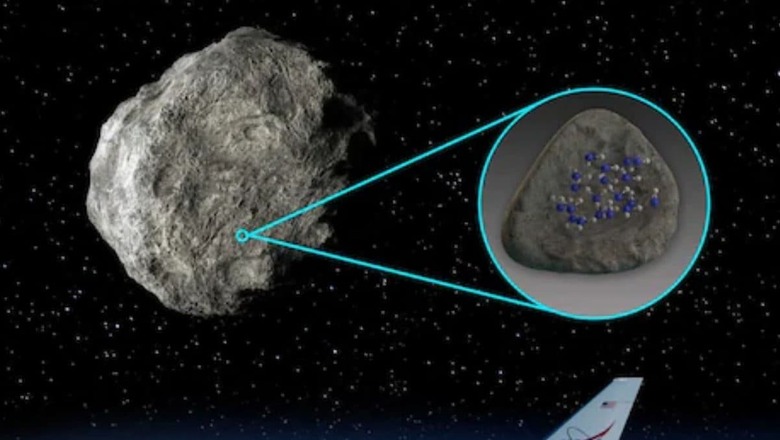
views
Scientists have discovered water molecules on the surfaces of two asteroids for the very first time. This discovery is a significant milestone in understanding how water is distributed across our solar system. The breakthrough was made possible through the data gathered by the Stratospheric Observatory for Infrared Astronomy (SOFIA).
SOFIA is the world’s largest airborne astronomical observatory jointly operated by NASA and the German Aerospace Centre but has since been retired. Scientists studied two asteroids named Iris and Massalia. They found water molecules on their surfaces. The research about this discovery has been published in The Planetary Science Journal.
Astronomy.com reports that both Iris and Massalia are rich in silicates. Water molecules were discovered either trapped in the glass formed from impacts or chemically bonded to other minerals on the asteroids. Scientists will use this discovery to understand better how water reached Earth.
Before this study, the instrument SOFIA had detected water in the southern region of the Moon. Although SOFIA detected a type of hydrogen on both the Moon and certain asteroids, it encountered difficulties telling apart water and hydroxyl, which are closely related chemicals.
Ms Arredondo and her team researched about four asteroids: Parthenope, Melpomene, Iris and Massalia. While three of these asteroids displayed absorption at a wavelength of 3 micrometres, Iris and Massalia exhibited absorption at 6 micrometres.
Ms Arredondo stated, “This is the first time water molecules have been found on an asteroid’s surface in space.” She described how their study was motivated by another team’s success in spotting water on the sunlit part of the moon. Using SOFIA’s abilities, they aimed to find similar signs on other celestial objects.
“The spectral features hinted that the amount of water on the asteroid is similar to what we find on the sunlit side of the Moon. Likewise, water on asteroids can be connected to minerals or soaked into silicate, and it can also be trapped or dissolved in silicate impact glass,” Arredondo explained.
Space.com reports that Iris and Massalia, measuring 199 km and 135 km in diameter respectively, follow comparable orbits. They travel an average distance of 2.39 astronomical units (AU) from the Sun, approximately the same distance as between the Sun and Earth.




















Comments
0 comment